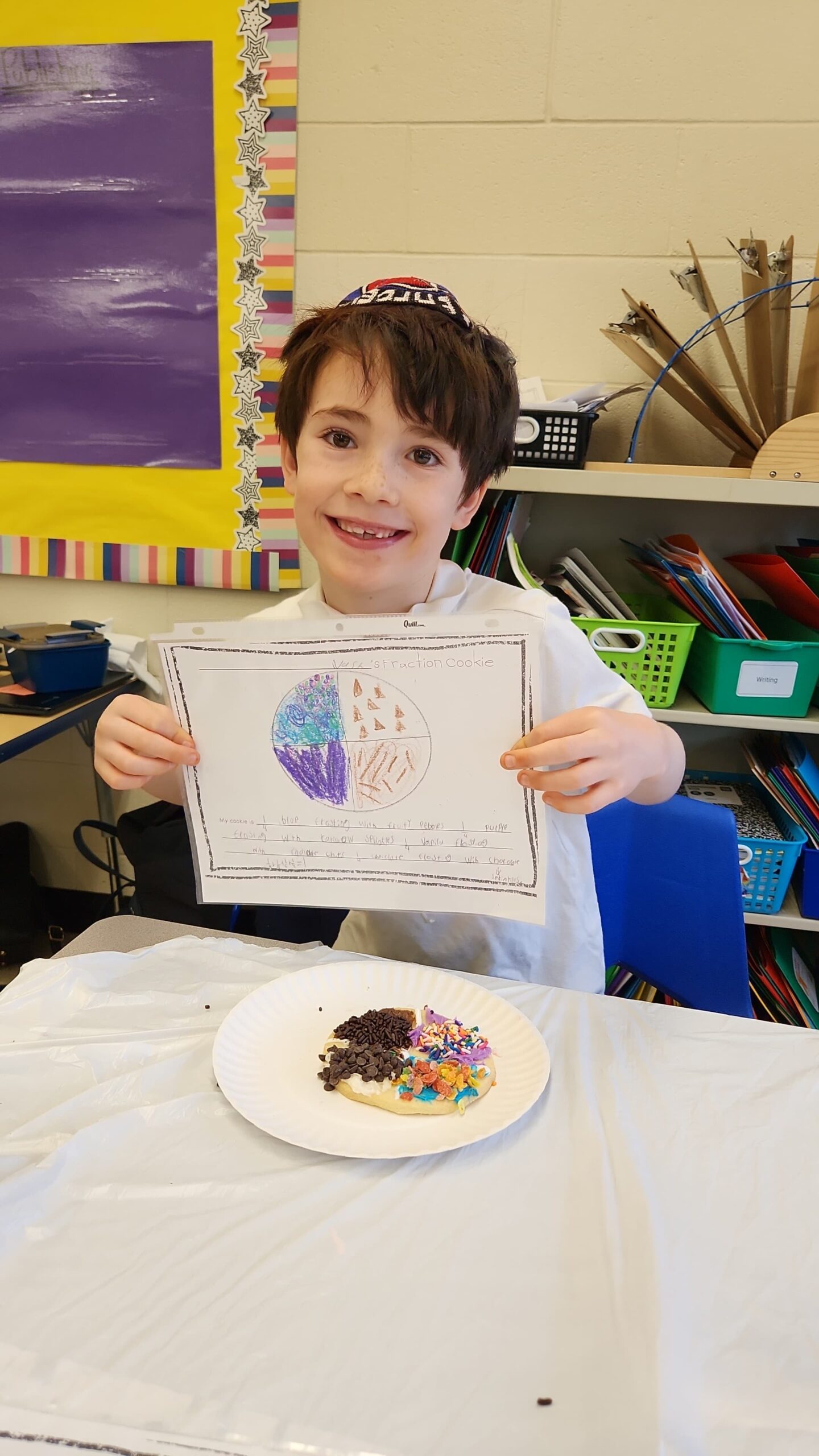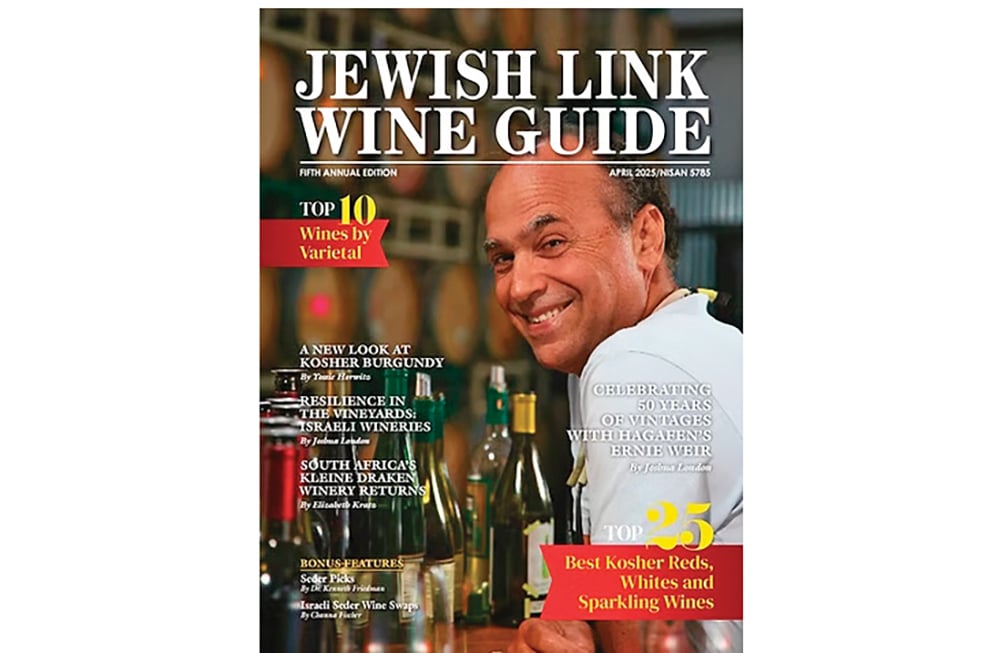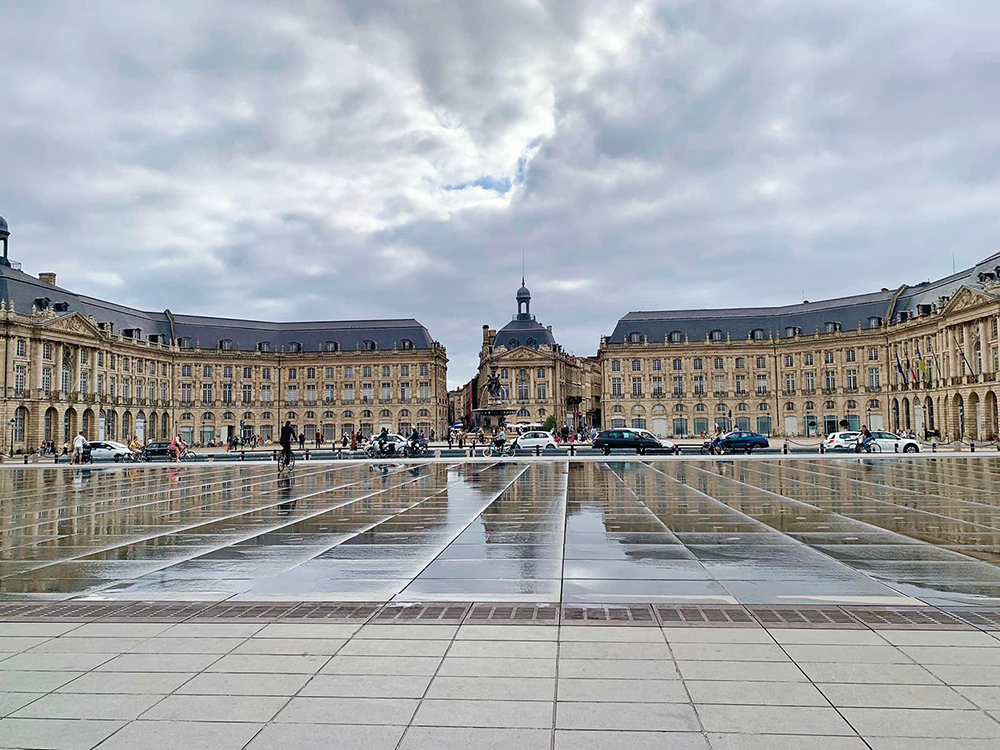
In early July, I was privileged to take a brief but awesome trip to Bordeaux, France.
Why Bordeaux? For starters, wine has been an essential part of the city since antiquity. Bordeaux, France’s sixth largest city, is also brimming with history and is elegant, beautiful and wonderfully accessible. While the Jewish community in Bordeaux is not especially large, it is active and there are distinct options to facilitate kosher travel. I highly recommend travelling to the Bordeaux area and am chomping at the bit to return.
My trip consisted of two distinct segments spanning four days. The first day was focused on the sights of Bordeaux’s city center and for the remaining three days I was part of a small group that enjoyed a specialized kosher wine tour, visiting some of the very best wineries that also happen to produce limited quantities of fabulous kosher wine.
Visiting Bordeaux
Bordeaux (pronounced bor-DOH) is the name of a major port city in southwest France, the name of the wine-growing region around the city, and serves as the capital of the Nouvelle-Aquitaine region as well as the prefecture of the Gironde département (one of the three levels of government administration in France).
Bordeaux lies on the Gironde, a big, navigable estuary — the largest in western Europe — formed from the meeting of the rivers Dordogne and Garonne, which empty into the Gironde just downstream of Bordeaux’s city center.
Hugging the Garonne River in a crescent shape, Bordeaux’s city center and historic harbor are known by the sobriquet, Port de la Lune or Port of the Moon. This area was recognized in 2007 as a UNESCO World Heritage site for its innovative classical and neoclassical architecture and for the city’s prominence across the centuries as both a global trading center and heart of France’s wine industry.
Bordeaux was hugely significant as the port through which wine was shipped globally and remains the second largest wine-growing area in France. Over 700 million bottles of wine are produced annually in Bordeaux. However, only a teeny, tiny, though financially worthwhile fraction of Bordeaux wine is produced kosher.
I stayed at the wonderfully located, 4-star rated Adagio Bordeaux Gambetta hotel; four nights for about $570. My room included a very usable kitchenette and the hotel also has an onsite gym. The central location of my hotel enabled me to maximize my one full day to tour the city before meeting up with my fellow wine tour travelers later that evening.
Thankfully, Bordeaux modernized its transportation infrastructure around 20 years ago, creating a vast and efficient network of buses, tramway lines and shuttle boats. Thus, within minutes of exiting my hotel I was in full tourist mode.
As a result of this modernization, the city is very tourist friendly and more walking and bicycle friendly than car friendly, as many streets were changed to pedestrian only or rendered one way to facilitate the tramways. Do keep this in mind if you plan to rent a car while visiting as you will only need it for day trips outside of the city.
Bordeaux also has an excellent and dynamic tourist information office that genuinely welcomes visitors from far and wide and greatly assisted structuring my on-the-spot itinerary planning for the day.
Things to Do That Are Not Wine-Focused
Even without leaving the city to visit wineries, which was my primary focus on this trip, there is an awful lot to do and see in Bordeaux itself. So, to fill my day in the city, I headed straight to the tourist information office to pick up a 24-hour Bordeaux CityPass, a unique tourist option created for visitors to the city center.
The best way to efficiently make the most of any visit to the Bordeaux city center is to use the Bordeaux CityPass, available in 24/48/72-hour options directly from the tourist office (visiter-bordeaux.com). The CityPass offers unlimited public transport and free or discounted entry to many of the city’s top attractions, including museums, historical sites and guided tours.
The tram network covers the whole city and almost every place one might want to visit is accessible this way, while the bus system and good old-fashioned walking will get you to the other worthwhile city stops. Clear and easy maps are on display at every tram stop, so it is easy to plan and recheck your journey. I also recommend downloading the Transport Bordeaux Metropole (TBM) app, which offers live and up-to-date travel information and helpful directions.
From there I booked a free guided boat tour. The CityPass allows you to choose one of four types of tours as your “freebie” — either an electric “train” with pre-recorded audio commentary (various languages), a bus tour, a boat cruise with live tour guide, or a guided walking tour. There were many appealing boat and walking tour options. I went for the boat tour that launched later in the afternoon and that came with a free drink — wine, beer or soft drink; no kosher wine here so opted for ice-cold beer. I then booked, with a discount, the open bus tour, and with the aid of the helpful tourist office representative also mapped out a plan of things I wanted to see and museums to visit.
The VisioTour bus tour was great. The alternating cloud cover and bright sunshine kept the temps exceedingly comfortable. The city scenes are positively charming, even by bus, with very alluring streets and boulevards, and the audio commentary was very informative. The tour provided a great snapshot of the city center, allowing me to better select locations to visit properly on foot, time permitting.
I then took the tram to La Cité du Vin (“City of Wine”), a “unique cultural centre dedicated to the universal, living heritage of wine” as the tourist office put it. This modern, state-of-the-art museum dedicated to all things wine is very well done, sleek and intelligently designed. It offers an educational and sensory journey through the world of wine, highlighting Bordeaux’s rich wine heritage using interactive exhibits, innovative audiovisual installations, wine tasting sessions (nothing kosher, obviously), and has stunning views of the city from its Belvedere.
Note that those with professional wine appreciation training or equivalent knowledge and understanding of wine may find it all a bit too basic to sustain a lengthy visit, but it is brilliantly conceived and finely executed all the same. The permanent exhibit is free with the CityPass. Otherwise the cost is ˆ27 ($29.38) for adults and ˆ14 ($15.23) for children 6-17.
I then hopped on a shuttle boat across the Garonne River to catch my river cruise aboard the Yacht de Bordeaux. This tour was fabulous, if a bit windy and there was plenty of space below deck to enjoy the tour through the massive windows, but I preferred the fresh air, sun and wind.
Our entertaining and engaging guide’s commentary came first in French then excellent English, and she was friendly and very responsive to questions. A worthwhile 90 minutes here. The boat returned to the dock just in time, as per my TBM app, to hop on a shuttle boat back across the Garonne River to the city center.
The other option for crossing the river, which I traversed multiple times over the course of my stay in Bordeaux, is the 19th century Pont de Pierre, or “Masson Bridge,” an evocative and picturesque stone bridge which connects the left bank of the river Garonne to the right bank, from the Cours Victor Hugo, one of the main arteries of the city, to the Quartier de La Bastide, the now mostly urbanized and modernized industrial zone.
Once back in town I sauntered around the sites, taking in the Place de la Bourse, an iconic square with a stunning reflective water feature known as the Miroir d’eau. Framed by elegant neoclassical buildings, the Place de la Bourse square epitomizes Bordeaux’s fairly grand architecture. The adjacent Place des Quinconces is one of the largest city squares in Europe, featuring the beautiful and majestic Monument aux Girondins fountain, which commemorates the Girondin deputies who fell during the French Revolution.
The Place de la Victoire is another impressive square with a massive 18th century arc and marble obelisk at its center. Grand if comparatively ugly, it has a cool vibe due to its proximity to the university campus, numerous bars and cafes, and the massive shopping district. I then wandered directly through to the Rue Sainte-Catherine, a pedestrian-only street and one of the longest shopping streets in Europe, bustling with shops, cafés, restaurants and teeming with happy tourists and active locals, known as “Bordelais” (masculine) or “Bordelaises” (feminine).
Jewish Life and History in Bordeaux
I was also keeping an eye out for signs of Jewish life.
Bordeaux’s Jewish community has a long and storied history, dating back with certainty to the Middle Ages (though possible if uncertain evidence of Jewish life stretches back even farther). Under English sovereignty from 1154-1453, Bordeaux was spared some of the anti-Jewish sentiments that were rife in France and spared France’s successive royal decrees of expulsion in 1284, 1305 and 1310.
Meanwhile, the Jews expelled from Spain and Portugal found refuge in Bordeaux. These included at some points not only the Converso crypto-Jews but also Jews identifying and living as Jews. By the 18th century the Spanish and Portuguese Jews of Bordeaux came to play a significant role in the city’s economic and cultural life.
Not too much architectural evidence of the pre-18th century city remains, Jewish or otherwise, and World War II further decimated signs of Jewish communal life. Bordeaux did not acquit itself especially honorably during the war. That said, Jewish life remains and continues in relatively good health. Today the Jewish community is around 3,000 strong, mostly of North African descent.
A key landmark open to tourists through advance arrangement is the Grand Synagogue of Bordeaux (6 Rue du Grand Rabin Joseph Cohen), one of the largest synagogues in France. It has daily minyanim, which I attended, using a smallish side room within the Grand Synagogue complex, and on Shabbos the 1,500-seat grand sanctuary is used. The nusach and minhagim are Spanish and Portuguese.
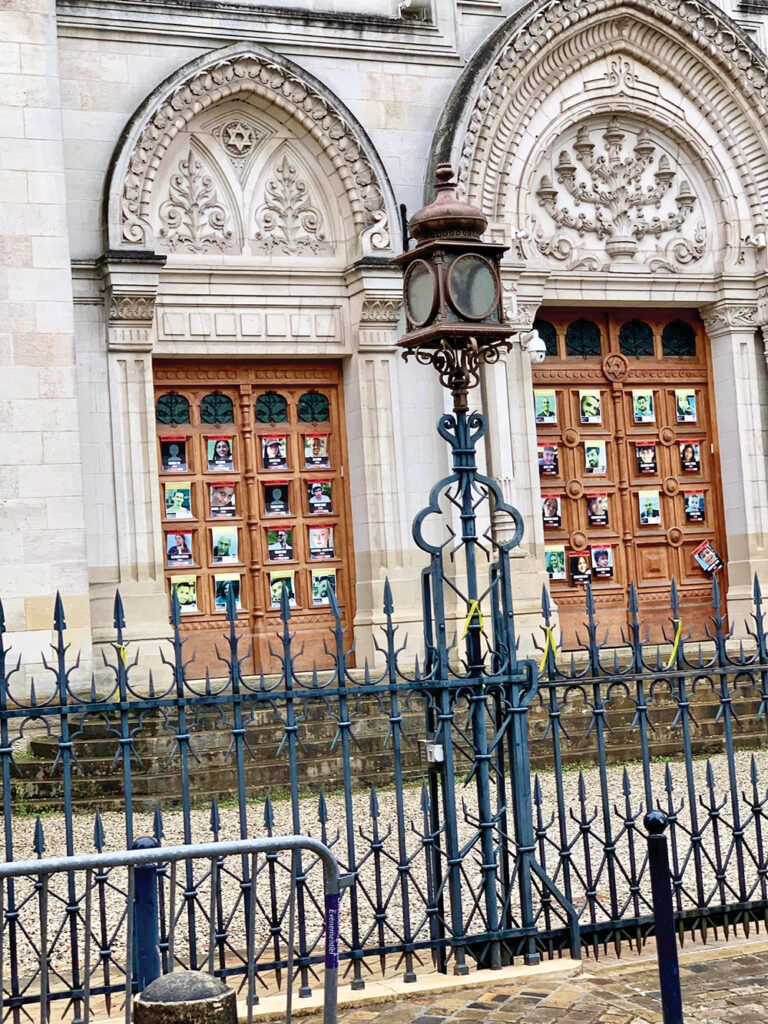
Built in 1882 (construction began in 1877), and renovated in 1956, the synagogue is a testament to the once-thriving Jewish community. The building was classified as an historic monument in 1998 and is also listed as a UNESCO world heritage site. The shul’s imposing facade and the richly decorated interior décor reflect the prosperity that the Jewish community of Bordeaux previously enjoyed. Communal life remains active with regular daily minyanim, social events, daily shiurim, and a Talmud Torah for children.
Bordeaux also has a Chabad shaliach, a meat restaurant (under the aegis of Chabad), kosher catering and two kosher markets. Other kosher eateries have come and gone, and while the current restaurant, YAD (30 rue du Palais Gallien), offers adequate to tasty Israeli and Mediterranean style repasts, the speed of service left much to be desired. Ordering Uber Eats from the hotel lobby (roughly a 10-minute distance by foot) provided, we discovered, faster and roughly as accurate service as ordering in situ for our party of 10.
Throughout my travels in Bordeaux I wore my yarmulke, resorting to a baseball cap only when the sun exposure demanded shade. I received the occasional odd stare but nothing even mildly foreboding as is more commonly felt in and around Paris.
Wine Touring
Bordeaux is a huge wine tourism hub in general, but not for kosher wine. Sure, there is plenty of kosher wine produced there, but it is produced under contract for larger kosher wine companies like Royal Wine, Le Vin IDS, CEDEV, Bokobsa, and G.M. Taïeb, and is mostly all shipped out to the USA, Israel, the U.K. and other parts of Europe.
Any form of a kosher wine tour in Bordeaux requires special advance arrangements, typically through professionals with “connections” and a speciality in organizing these sorts of trips. Further, some of the most prestigious wine estates that also produce limited quantities of kosher wine are not typically open to the public at all.
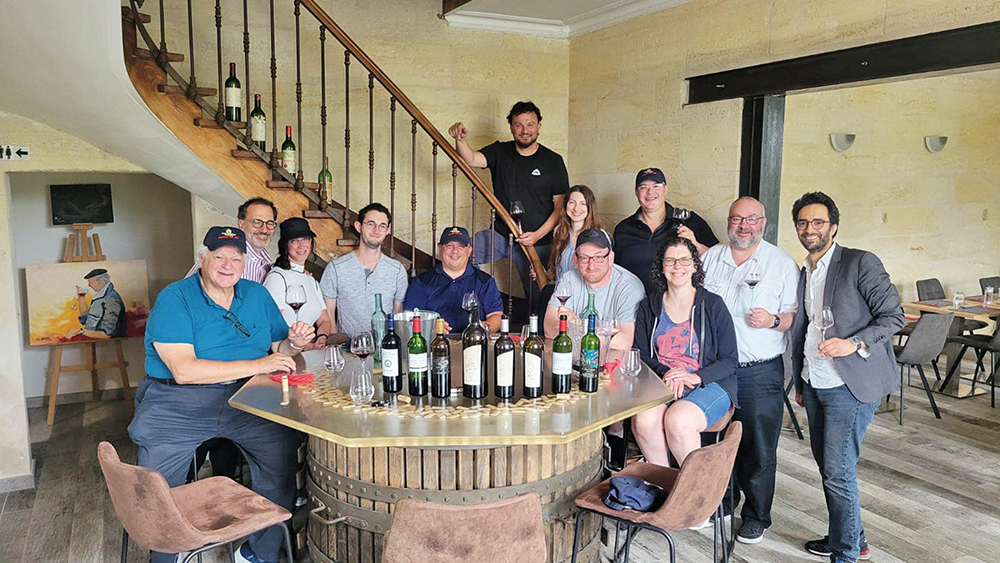
I was privileged to have gone on a “Wine with Zev” tour organized by my friend Zev Steinberg (winewithzev.com or insta@winewithzev). Over the course of just three days, we toured 11 primo wine estates. These included Châteaux Rayne Vigneau in Sauternes, Smith Haut Laffite, Malartic-Lagraviere, and Domaine de Chevalier, all in Pessac-Léognan; Léoville Poyferré in Saint-Julien; Lascombes and Marquis d’Alesme both in Margaux; Pontet-Canet in Pauillac; Domaine Roses Camille in Pomerol; and Le Dome and Valandraud, both in Saint-Émilion. These are the stuff of wine geek dreams, even without factoring in the kosher niche.
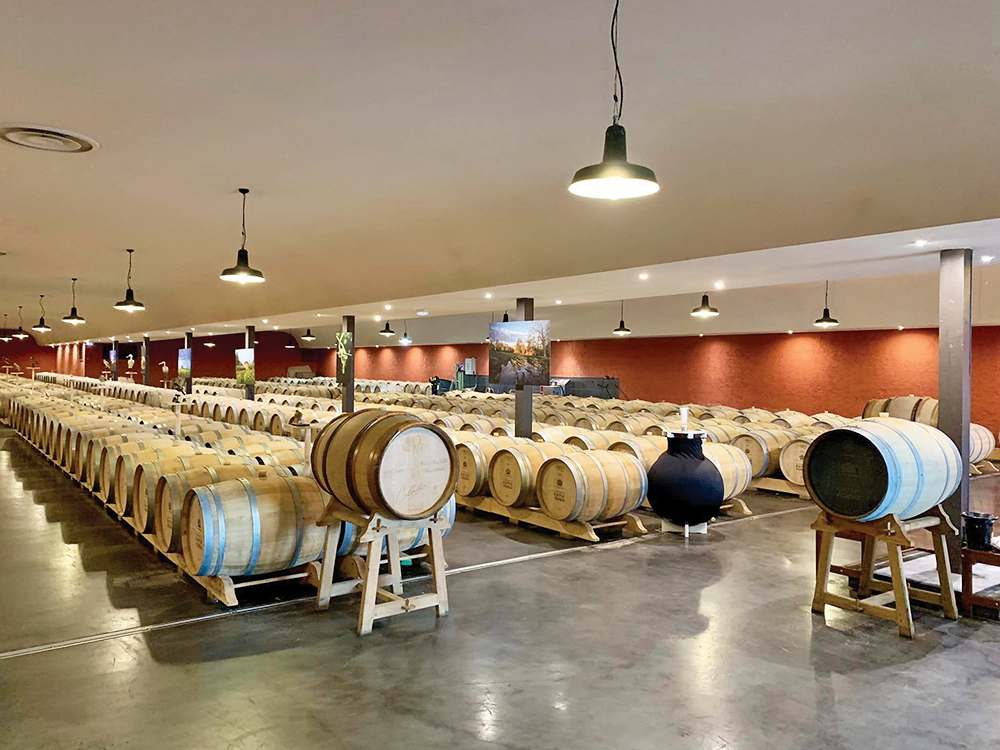
This tightly scheduled, wine-directed tour was crafted especially for a cohort of kosher wine collectors and winos with mostly rigorous formal wine education. Zev created an especially wine-heavy itinerary to suit our tastes, eschewing cultural, historical and other non-winery specific aspects of what the Bordeaux region has to offer. It was curated for our group to maximally geek-out, as it were. One should discuss details in advance with Zev, or whatever tour organizer you might use, to craft the appropriate package for you or your group. Our intense wine-centered focus worked a treat for us.
Allow one example to suffice. Our very first winery visit of the trip was Château de Rayne Vigneau, a Sauternes estate that was ranked as Premier Cru Classé or “First Growth” in the historic Bordeaux Wine Official Classification of 1855. This is “wine aficionado speak” indicating that this white wine estate is officially recognized as one of the truly great wine producers of Bordeaux.
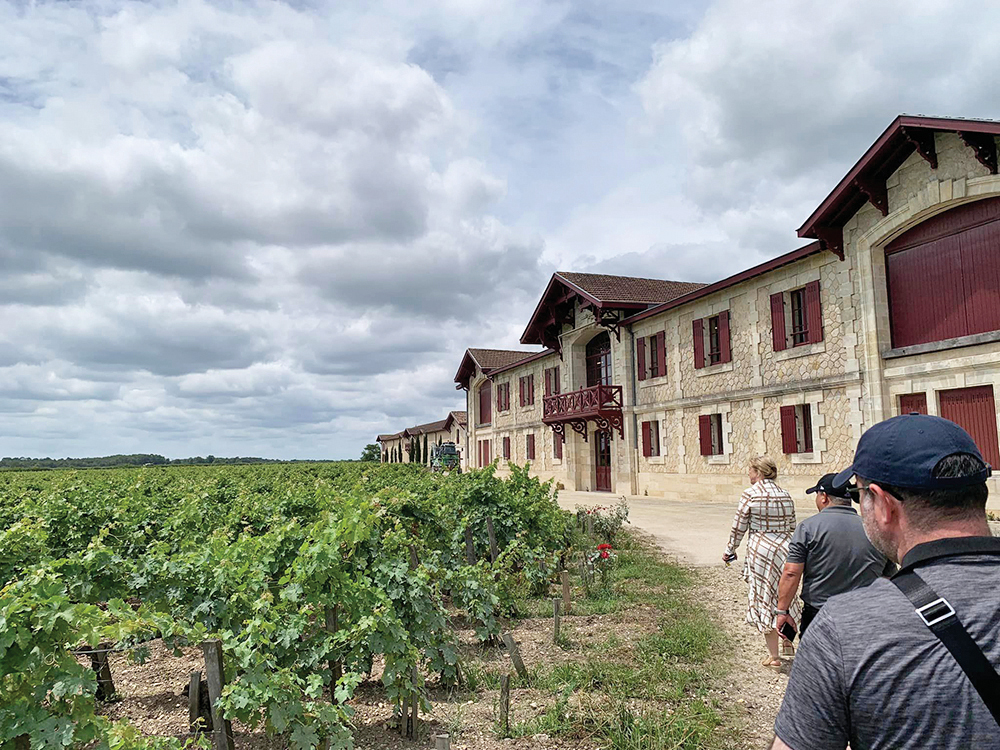
The Sauternes region is universally celebrated for producing amazingly complex and delicious sweet white wines that have been blessed by nature in the form of a necrotrophic fruit fungus called botrytis (Botrytis cinerea), popularly known among wine lovers as “noble rot.” This fungus develops naturally and beneficially only under the right climatic and geographical influences, with which the Sauternes region is particularly blessed, and when the conditions are favorable and botrytis develops, it has the effect of intensifying and concentrating the sweetness of the grapes while also adding great and distinctive flavor complexity.
Botrytis does not have a uniform impact in the vineyard, however, spreading instead berry by berry at an irregular pace. The outstanding producers of the region, such Rayne Vigneau, engage in several rounds of careful handpicking and berry-by-berry selection during the harvest to maximize the vintage. Due to this slow and uneven development of botrytis, difficult and protracted harvesting, and the extremely reduced volume of liquid within each usable grape berry, juice yields and the resulting wine yields are understandably low, and quality production is necessarily expensive. Kosher production is even more so.
Guiding us through Rayne Vigneau’s vineyards, winery and production process was Vincent Labergere, the estate’s director, manager and winemaker, who has been making wine in Sauternes for over 30 years on top of his other wine industry experience (which included previous experience with limited kosher red wine production elsewhere in Bordeaux).
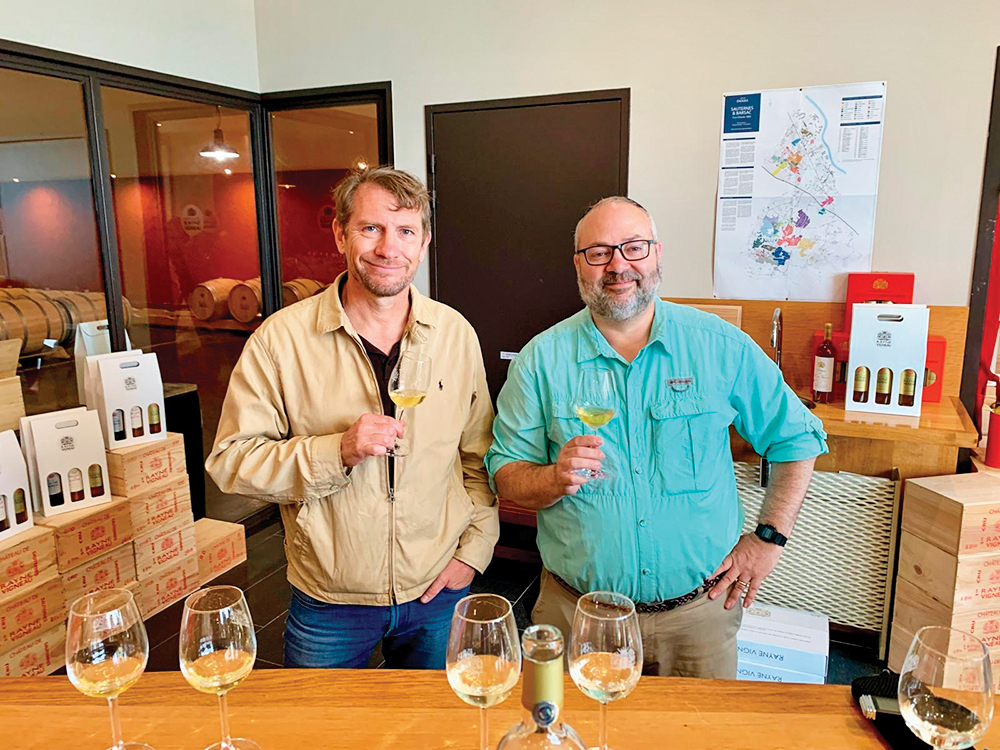
Labergere proved an excellent and most gracious host. We tasted five remarkable kosher wines in all, two dry (coming soon to the kosher market) and three sweet. All were absolutely delicious! Just superb.
During this tasting, Labergere also explained his vision and quest to make Sauternes refreshing and thirst-quenching while still sweet, and therefore more suitable for a wider variety of foods and occasions. By contrasting the “classical” 2014 vintage with the 2018 vintage, he demonstrated for us the distinction he is aiming for and how he sought to achieve a specific sort of fine balance between the sugar, bitterness and savoriness.
With the 2018, explained Labergere, “I tried to hide the sugar, to show the complexity of the wine, to have more bitterness,” and while the finish remains long, as it was on the 2014, “the ’18 is more interesting because the end is long but on the acidity [rather than the sweetness] although you still have a sensation of sugar.” This finer balance means that “You can eat what you want with this kind of wine,” not just dishes for which the classic Sauternes sweetness is a compliment or opportune contrast. The 2018 is an example of this newer style he has been pursuing for the estate; he first began working with Rayne Vigneau in 2009, joining full time in 2015. “When you eventually taste the 2024 [vintage],” he pledged, “you will see this style even more so,”
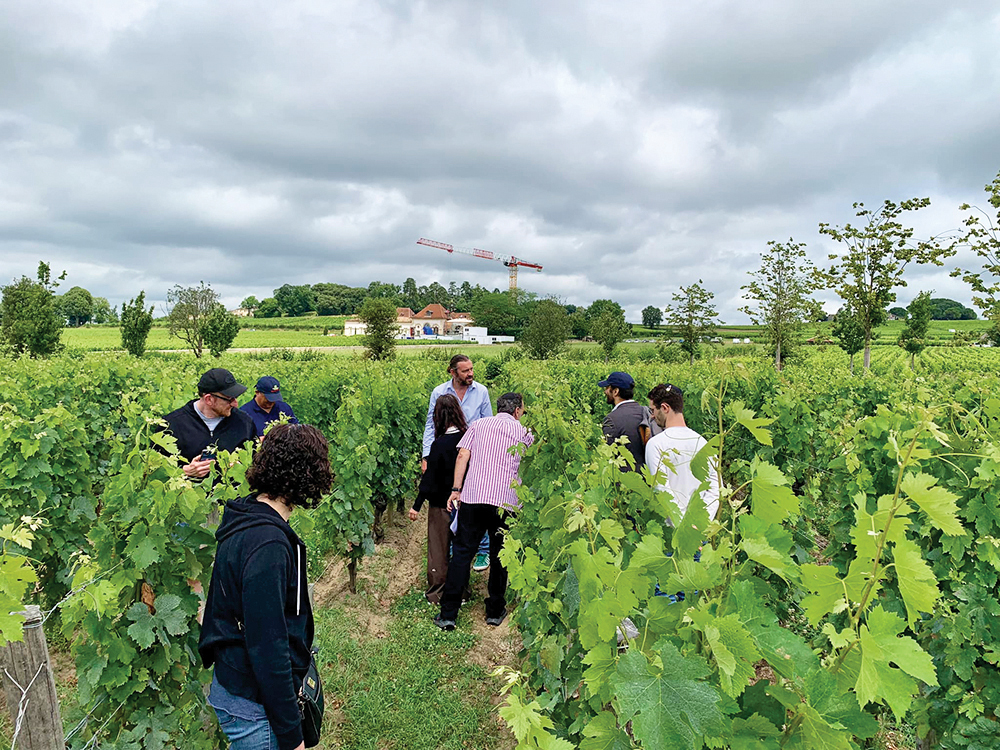
I could go on, and on and on. Yet, Bordeaux really does have much more to offer than just wine. Between my one day of city center tourism and my three days of focused wine region gallivanting, I was ready to head home but remain eager to come back to Bordeaux soon.
I’m up for more wine tourism in Bordeaux, to be sure, but also more of the beautiful and alluring city and its wonderful environs. Bordeaux offers a variety of rich and fulfilling traveling experiences and is a city I hope to return to, preferably next time with my family in tow.

Saint-Émilion.
Joshua E. London is a well-known wine writer and contributor to the Jewish Link Wine Guide.


